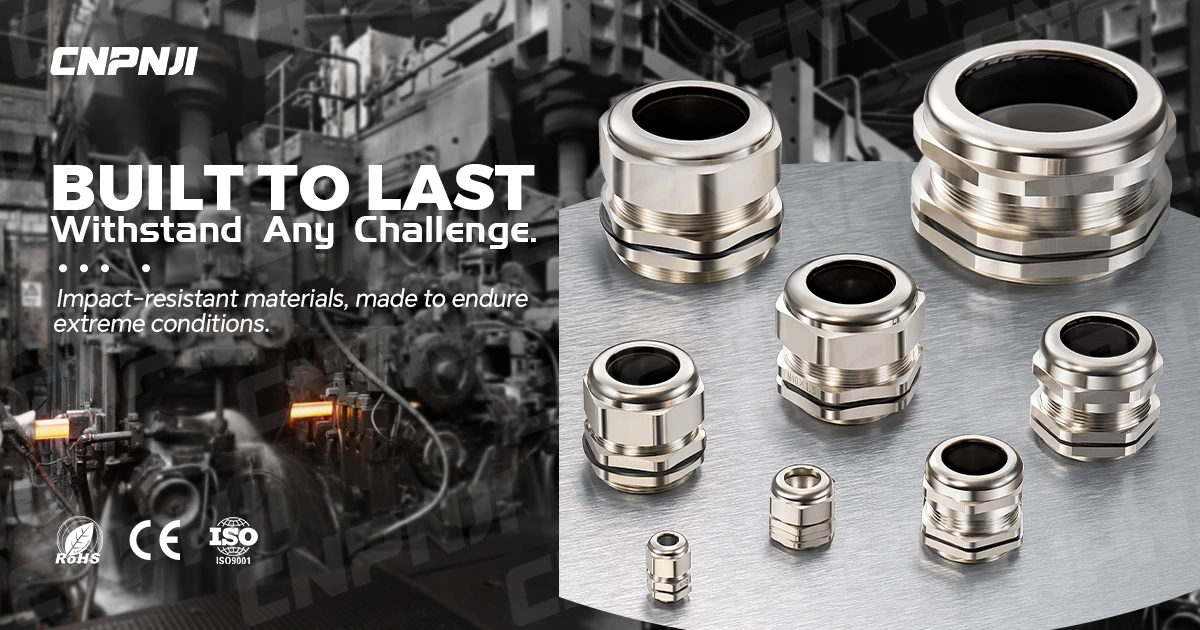The multiple advantages of metal cable gland
The multiple advantages of metal cable gland
Metal cable glands, as an important connecting component widely used in various industries, possess several significant advantages that make them the preferred choice for many applications.
High Strength and Durability:
Metal cable glands are typically made from high-strength alloys or stainless steel, materials that not only withstand considerable tensile and compressive forces but also maintain their structural integrity over extended use. Therefore, in high-load environments (such as heavy machinery and construction structures), metal cable glands demonstrate exceptional performance. Their durability significantly reduces maintenance costs for equipment.
Corrosion Resistance:
Many metal cable glands undergo special treatments, such as galvanizing, plastic coating, or applying anti-corrosive coatings, which significantly enhance their corrosion resistance. This improvement increases the service life of the cable glands. In humid, rainy, or chemically corrosive environments, metal cable glands can effectively resist corrosion, maintaining their functionality.
Good Conductivity:
In electrical and electronic devices, the conductivity of metal cable glands far exceeds that of many non-metal materials, making them particularly important for electrical connections. Whether used in household appliances, industrial equipment, or communication infrastructure, metal cable glands can provide stable and efficient current transmission, ensuring the safe and reliable operation of devices.
Fire Resistance:
Metal materials typically exhibit high fire resistance and melting points, making them less likely to burn or melt in high-temperature environments. This characteristic grants metal cable glands unparalleled safety in high-risk fire areas, such as chemical plants and fire protection systems. Using metal cable glands can effectively reduce the risk of fire caused by connection components, enhancing the overall safety of structures.
Reliable Connection:
Metal cable glands offer various connection methods, including threaded connections, welding, and riveting. These methods ensure the stability and strength of the metal cable glands during use. Compared to cable glands made from other materials, metal cable glands remain more stable under vibrations and impacts, thereby reducing the likelihood of failures due to poor connections.
Strong Adaptability:
Metal cable glands can adapt to various extreme environmental conditions, such as high temperatures, high humidity, severe vibrations, and high pressures. This extensive adaptability allows for their application in high-demand fields such as aerospace, automotive manufacturing, construction engineering, and marine engineering, satisfying the needs of different environments.
Diversity and Broad Applications:
There are numerous types of metal cable glands available in the market, including flanges, cable glands, valves, and hose fittings, which cater to various industries such as machinery, construction, automotive, aerospace, and electronics. Their diverse designs and functionalities allow them to meet various connection needs, addressing technical challenges across different fields.
In summary, metal cable glands, with their advantages of high strength, corrosion resistance, good conductivity, and fire resistance, are indispensable connection components in various industries. They provide reliable support for equipment's safe operation and performance assurance. With ongoing technological advancements and the development of new materials, the future of metal cable glands is likely to exhibit even broader application prospects.

